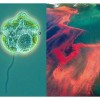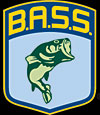 This 10-page fact sheet summarizes the existing literature that attempts to measure some of the economic consequences associated with harmful algal blooms and describes the methodologies, types and sources of data used, types of HABS examined, research gaps in previous studies. Was written by Sherry L. Larkin and Charles M. Adams, and published by the UF Department of Food and Resource Economics, August 2013.
This 10-page fact sheet summarizes the existing literature that attempts to measure some of the economic consequences associated with harmful algal blooms and describes the methodologies, types and sources of data used, types of HABS examined, research gaps in previous studies. Was written by Sherry L. Larkin and Charles M. Adams, and published by the UF Department of Food and Resource Economics, August 2013.
http://edis.ifas.ufl.edu/fe936
Tag: Sherry L. Larkin
The Economic Impact of the 2011 Florida BASS Federation Tournament to Osceola County and the Event's Economic Value to Participants (FE916)
 The Florida BASS Federation Nation is a chapter of a national organization whose goal is to stimulate public awareness of bass fishing as a major participant sport. Each the state Championship tournament attracts anglers to a competitive event in which participants seek to catch the largest cumulative weight of bass over two days. This article describes an assessment of the economic impact in Osceola County associated with the State Championship tournament. Findings from this analysis should help planners and other stakeholders of similar tournaments better estimate the economic benefits associated with such community activities. This 9-page fact sheet was written by Sherry Larkin, Jessica Georges, Alan Hodges, Michael Allen, and Dale Jones, and published by the UF Department of Food and Resource Economics, October 2012.
The Florida BASS Federation Nation is a chapter of a national organization whose goal is to stimulate public awareness of bass fishing as a major participant sport. Each the state Championship tournament attracts anglers to a competitive event in which participants seek to catch the largest cumulative weight of bass over two days. This article describes an assessment of the economic impact in Osceola County associated with the State Championship tournament. Findings from this analysis should help planners and other stakeholders of similar tournaments better estimate the economic benefits associated with such community activities. This 9-page fact sheet was written by Sherry Larkin, Jessica Georges, Alan Hodges, Michael Allen, and Dale Jones, and published by the UF Department of Food and Resource Economics, October 2012.
http://edis.ifas.ufl.edu/fe916
Economic Value of Upland Invasive Plant Management in Florida State Parks (FOR290/FR352)
 Invasive plants are a serious problem for Florida’s natural areas, but what is the impact of their management on the economic value of our state parks? This 6-page fact sheet reports the results of a survey of Florida residents to determine how much they would pay for lower levels of invasive plant coverage in parks they visit, and estimate the value of invasive plant control. Written by Damian C. Adams, Anafrida N. Bwenge, Donna J. Lee, Sherry L. Larkin, and Janaki R. R. Alavalapati, and published by the UF Department of School of Forest Resources and Conservation, October 2011.
Invasive plants are a serious problem for Florida’s natural areas, but what is the impact of their management on the economic value of our state parks? This 6-page fact sheet reports the results of a survey of Florida residents to determine how much they would pay for lower levels of invasive plant coverage in parks they visit, and estimate the value of invasive plant control. Written by Damian C. Adams, Anafrida N. Bwenge, Donna J. Lee, Sherry L. Larkin, and Janaki R. R. Alavalapati, and published by the UF Department of School of Forest Resources and Conservation, October 2011.
http://edis.ifas.ufl.edu/fr352
Strategies to Address Red Tide Events in Florida: Results of a 2010 Survey of Coastal Residents (FE891)
Residents in coastal communities might oppose programs for preventing, controlling, or mitigating the effects of these harmful algal blooms if they would increase costs to residents or would cause harm to other aspects of the marine environment. This 6-page report presents the results of a survey intended to help summarize public opinion, inform policy makers, and evaluate possible programs for use in Florida. Written by Sherry L. Larkin, Kristen M. Lucas, Charles M. Adams, and John Stevely, and published by the UF Department of Food and Resource Economics, April 2011.
http://edis.ifas.ufl.edu/fe891
FE835 Economic Impacts of Alternative Regulatory Scenarios on the Florida Fresh Half-Shell Oyster Industry: A Study of Potential Outcomes
FE835, a 3-page executive summary of a report by K.L. Morgan, T.J. Stevens, R.L. Degner, S.L. Larkin, and C.M Adams, summarizes the results of a study to examine the economic impacts of possible closures of the fresh half-shell oyster market for varying time periods with the intention of protecting consumers from Vibrio vulnificus infections. Published by the UF Department of Food and Resource Economics, June 2010.
http://edis.ifas.ufl.edu/fe835
FE711/FE711 Public Costs of Florida Red Tides, 2007
FE711, a 4-page executive summary by Kimberly L. Morgan, Sherry L. Larkin, and Charles M. Adams, summarizes Public Costs of Florida Red Tides: A Survey of Coastal Managers, a study which attempted to quantify public expenditures and procedures resulting from red tide-related management and mitigation issues. Includes references. Published by the UF Department of Food and Resource Economics, June 2008.
http://edis.ifas.ufl.edu/FE711